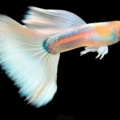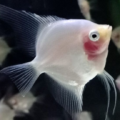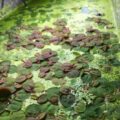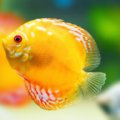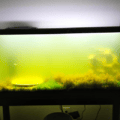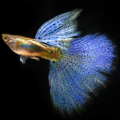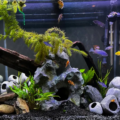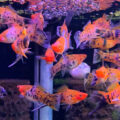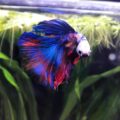Overview on tropical freshwater and marine fish species that create visually stimulating views in a summer-themed aquarium using bright lighting, warm tones, and vibrant plant layouts.

Introduction
Are you looking for vibrant aquarium ideas to upgrade your tank and keep it colorful throughout the year? Many aquarists turn to aquascaping, but you can make your tank stand out with a tropical fish display.
Tropical summer aquarium fish are species that thrive in saltwater and freshwater. They’re often chosen for aquariums due to their colorful and unique physical appearance.
So, to maintain a vibrant tank, all year round, add one or more of these colorful freshwater fish species to your aquarium. And to really make the colors pop, add bright lighting, warm tones, and vibrant plant layout with your aquascaping. Here’s a guide on nine colorful fish that shine in summer-themed aquariums.
Why Summer-Themed Tanks Pop
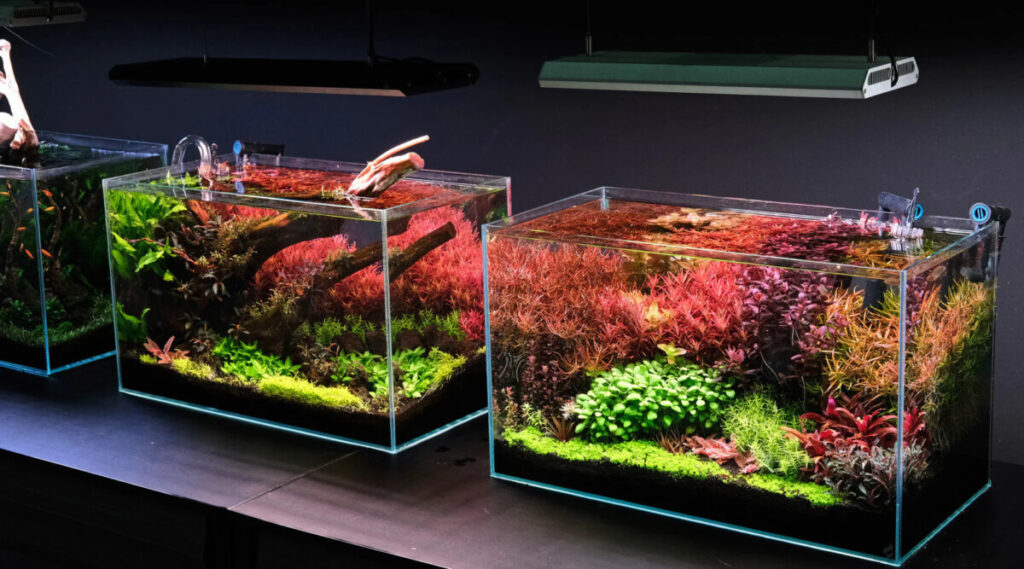
Before choosing your summer aquarium fish tank stars, you must first understand how to accentuate their colors with your aquascaping.
Lighting
Lighting is an easy way to explore colorful aquarium ideas. When you use high-CRI (Color Rendering Index) lighting, you enhance your pet’s natural color instead of changing it. However, if you want a contrast or different tones from your summer fish, use warm hue lighting.
Author’s Note: Check out our post Best LED Aquarium Lighting Units for Your Gallon Tank Capacity for an in-depth look at choosing the right lighting for your tanks!
Greenery
Lean into seasonal aquascape treatments and greenery for a stress-free maintenance of your all-year-round visually stunning aquarium.
Typically, aquarium plants can’t tell seasonal changes because it’s a controlled environment. But you must still carefully select live and artificial plants to bring your vibrant tank theme to life.
For a summer-themed tank, add warm-weather plants like Vallisneria and duckweed, and heat-friendly plants like Java Ferns and Anubias.
Additionally, consider adding seasonal products such as airstones and powerheads for targeted maintenance during the corresponding season.
Temperature
Summer freshwater fish thrive in warmer temperatures, so increase the aquarium’s heating within safe levels. This warmer temperature intensifies activity and coloration for some summer fish species, like tetras, cichlids, and catfish.
Now that you know why summer-themed tanks pop and how to achieve this vibrancy, let’s explore the species you can add to the aquarium.
1| Guppies (Poecilia reticulata) – “Rainbow in Miniature”

Colorful guppies are staples in many summer-themed aquariums because of their easy, prolific, dazzling color maps and small sizes.
As a tiny fish species, guppies are the choice nano fish for color-focused tanks. A male adult guppy is about 1.5 – 4 inches long, while the female stretches between 3-7 inches, which is still tiny. That’s why this species is perfect for nano summer-scapes.
With the many guppy strains existing, you can have a visual variety in your tank by mixing them.
| Large Strain | Veiltail Guppy, Fan tail guppy, Dumbo Ear Tail Guppy |
| Short Strain | Round tail Guppy |
| Sword Strain | Lyre tail Guppy, Lower Sword tail Guppy |
Because guppies are a shoaling species, it’s best to keep them in groups of at least four to five to encourage schooling. Try a combo of mosaic, lyre tail, neon, and dumbo-ear guppy strains for maximal visual variety.
Breeding and Maintaining Guppies

If you want to breed a summer fish species, guppies are the ideal beginner livebearers. It’s a prolific livebearer fish with easily manageable care needs.
Set their water temperature between 78 – 85°F and salinity at 1 tbsp per 5 gallons of water.
Author’s Note: Check out our post on The 20 Popular Types of Guppies for Your Aquarium for an in-depth look at the wide range of guppy varieties!
2| Endler’s Livebearers (Poecilia wingei) – Neon Sparks

Endler’s livebearers, Endler’s guppies, or simply Endler’s, are another nano colorful fish species popularly chosen for summer-themed tanks. They’re micro-sized with a maximum length of 2 inches for females and 1 inch for males.
As a tiny fish with a minimal bioload release, Endler’s fit in small tanks with planted aquascaping.
What this species lacks in size, it makes up for in appearance! Endler’s guppy is a bright nano fish with intensely colored scales. Like the plain guppy, there are multiple strains of Endler’s color varieties from El Tigre to Cumana, Campoma, and the hybrids like Staeck and Japan Blue Endler’s crossed with guppies.
You can mix them in your tank for a visually stimulating effect.
For the backdrop, note that Endler’s species thrive in planted tanks with bright setups. So, if you want a livebearer for plants, whether live or artificial, Endler’s are for you.
Endler’s Care Needs

This species thrives in warm water temperatures between 68 – 82% with dense vegetation and soft substrates on the tank’s floor. Feed them high-protein diets with plant-based supplements for healthy growth and development.
Endlers give birth to their young alive within 23 days without going through the larval cycle, and you can feed their fry flakes until they mature.
Author’s Note: Check out our post on The Vibrant Endler Guppy Fish for A complete care guide!
3| Neon/Green, Neon/Cardinal Tetra – Electric Schooling Glow

For a classic South American schooling fish effect, the glowing freshwater fish, Neon-Green, Green, Neon, or cardinal Tetras, is the choice. This colorful tetra species features a striking neon line across its silver-colored body, growing between 1.5 and 2.5cm long, which creates a neon ribbon effect when shoaling.
If the visual effect isn’t convincing you yet, then check out the ease of care.
Cardinal Tetra Care
To cater to an average neon tetra school of four to six, you need a tank of about 10 gallons with a temperature of 74 – 82°F.
Unlike most fish, neon green tetras need soft water with a pH level of 3 – .6 and feed on a wide range of diets like flakes, pellets, and baby brine shrimps. If you can manage this easy cardinal tetra care, then add it to your aquarium.
Author’s Note: Check out our post on The Colorful World of Cardinal Tetras for A complete care guide!
4| Dwarf Gourami/Honey Gourami – Warm Sunset Tones

You can’t say summer without the vibrant sunset hues of reds, oranges, and yellows, which are colors you’ll find on this dwarf gourami centerpiece. Its slender body has a bright red color with hints of yellow on its upper dorsal fin, black on the lower fin, and Smoky blue on its eye.
These honey gourami colors add summer warmth to your tank. It also helps that this sunset-colored fish is a gentle, community centerpiece fish that stands out while thriving with other calm species.
Care Tips

Some practical care tips for this beginner-friendly, colorful gourami include:
- Tank Size: 10 gallons per Honey Gourami
- Temperature: 72 – 82°F regularly and increase it to the highest during the breeding season.
- pH Level: 7 during breeding, 6 – 7.5 regularly
- Planted tanks: Live and floating
- Breeding Habits: Bubble nesting by males, while females lay eggs for external fertilization. The eggs hatch quickly within three days, and the fry mature within a few weeks.
- Diet: Omnivorous, including commercial flakes and crushed live foods for juveniles, with protein-rich and plant-based supplements for adults.
Author’s Note: Check out our post Are Dwarf Gourami Peaceful for details on their temperament!
5| Boesemani & Turquoise Rainbowfish – Two-Tone Fireworks

Let’s talk about dynamic duos and two-toned beauties like the Boesemani & turquoise rainbowfish large colorful fish combo.
Naturally, the Boesemani rainbowfish is a two-toned species with a blue front body color and an orange-black backside. However, the turquoise rainbowfish has a distinctive turquoise tone with other blue variations like cyan and deep aqua.
Maintaining these vibrant rainbowfish colors takes careful environmental and physical fish care. But before focusing on that, let’s analyze the Boesemani rainbowfish’s personality and why it’s the summer fish choice for your tank.
Rainbowfish are peaceful, social, and active species that can thrive in community aquariums with other calm species.
Maintaining Boesemani & Turquoise Rainbowfish
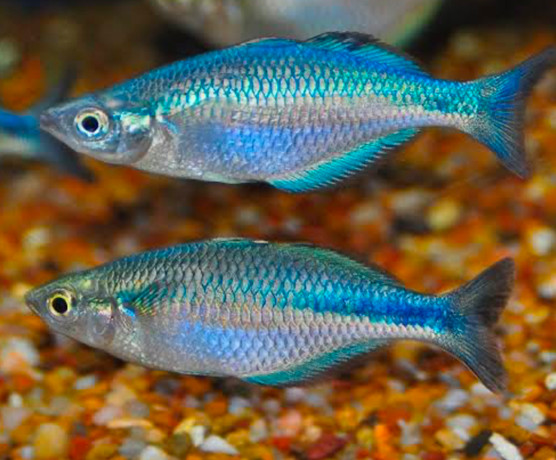
As active schooling fish species, Boesemani and Turquoise Rainbowfish require a large aquarium for comfort. They need the room to swim in groups and interact with their environment, but that also means they need regular and consistent care.
Turquoise & Boesemani rainbow care includes getting a long tank that’s at least 4 feet long, increasing the pH level to 8.5 – 9, maintaining a temperature of 70 – 79°F, and feeding them a healthy, balanced omnivorous diet.
Keep the water clean by changing 30 – 40% weekly and maintaining steady oxygen.
Author’s Note: Check out our post on The 12 Types of Freshwater Rainbowfish for a complete guide to colorful aquatic gems.
6| German Blue Ram/Electric Blue Ram – Jewel Cichlids

Africa is the hub for summer and tropical fish like colorful Cichlids, especially the bright, African Jewels. One standout strain is the multicolored electric blue ram species, which is the burst of color you need for your summer-themed aquarium.
Although its name suggests a “blue” appearance, this fish has shades of yellow, deep blue banded stripes, a smudge of red on its eyes, and a translucent tail and fins with specks of blue dots.
When you pair this wonderfully vibrant fish with lush summer planting, you get an unforgettable view.
Care Tips for African Jewel
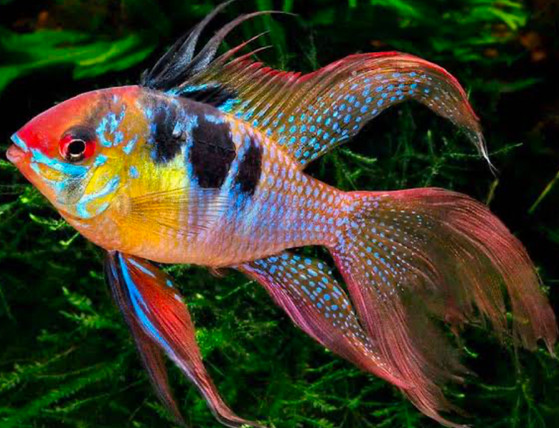
German blue ram care requires caution because of its sensitivity and typical habitat.
When building an aquarium for this species, you need to get at least 20 gallons of warm water per single Blue Ram cichlid and maintain a steady environmental condition.
This warm water cichlid thrives in a temperature of 78 – 85°F and a pH balance between 6 – 7. Maintain a steady water flow and make small water changes to avoid stressing your German blue ray cichlid because it’s a sensitive freshwater species that’ll react negatively to parameter swings.
Author’s Note: Check out our post on The 15 Best Dwarf Cichlids for a peaceful and colorful community aquarium.
7| Peacock Gudgeon – Confetti Pattern Micro-Predator

Would you consider a confetti pattern micro predator freshwater fish with a peaceful personality? Then, you’d love the Peacock Gudgeon, also called Peacock Gobies.
They’re long tropical fish species native to Eastern Papua New Guinea and grow at least 7.5cm. This nano centerpiece fish has so many interesting characteristics that make it worthy of a summer-themed aquarium, so let’s dive into them.
Firstly, you’d notice the distinctive peacock gudgeon colors of pastel blue scales with broken orange banded stripes, yellow tints on the body and fins, and black tints on the fins.
You can distinguish males and females by their head shape. The females have regular flat heads, while the males have bumpy, rounded heads.
Because of its natural origin, the Peacock Gudgeon is a planted tank fish that needs dense vegetation in its surroundings. So, add caves and live plants for a summery environment and maintain a gentle flow that won’t stress your pet.
Care Tips for Peacock Gobies

You can care for this tiny but striking tropical fish by setting a temperature of 72 – 80°F, a pH level of 6.5 – 7.5, and soft water with gentle filtration to keep the aquarium clean.
Because Peacock gobies are bottom dwellers, like your tank with soft substrate like fine sand, but secure it with a lid to prevent them from jumping out when they swim to the surface.
8| Celestial Pearl Danio (CPD) – Starry Night on Fins

We’re almost done with our summer-themed fish list, so let’s switch gears from warm and bright to starry nights on fins with this polka dot fish.
Celestial Pearl Danio is a nano schooling fish with a polka-dotted body and mixed colors. This fish has a charcoal gray body with yellow dots and vibrant orange fins, and when it moves in a group, it forms a beautiful starry display.
The beauty of the CPD coloration shows under dim lighting and dark substrates when its yellow dots shine in contrast to the dimness.
Celestial Pearl Danio Care

CPD species need the cover of darkness to feel comfortable enough to interact and show off their polka-dotted bodies because brightness makes them shy.
Set a temperature of 73 – 79°F, pH level of 6.5 – 7.5, add enough plants to give them hiding spots, shield your pets from direct light, and ensure they’re always in a group of 4 to 6 at a time.
9| Bonus Marine Option: Ocellaris Clownfish (if marine)
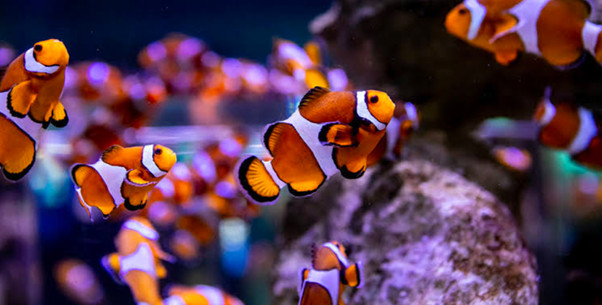
Well, close this guide with a colorful saltwater fish for marine aquarists. Ocellaris Clownfish is perfect for a summer reef or a lagoon-themed tank.
This vibrant marine aquarium centerpiece stands out with its iconic orange and white striped body with tinted black short fins.
This clownfish beginner pet is hardy and easy to maintain.
Clownfish Care Tips

Feed carotenoid-rich foods to Ocellaris Clownfish to maintain the nano reef fish’s color and maintain pristine water conditions. Set a temperature of 72 – 78°F and a pH level of 8.1 – 8.4 in a tank that’s at least 15 gallons wide per clownfish.
Add coral decor like live rocks to produce beneficial microorganisms that’ll stabilize the water and keep it salty.
Conclusion
Now that you’re at the end of this summer fish tank ideas review, one or two species must’ve caught your attention. To help you make the best choice, make a checklist by measuring each vibrant aquarium fish to your capacity:
- How large is your tank?
- What’s the fish’s temperament?
- How do you prefer your summer-themed aquarium?
For bright and warm palettes, choose Ocellarius Clownfish, Honey Gourami, Peacock Gudgeon, Boesemani Rainbowfish, and Guppies, while cooler-toned fish like Neon Green Tetra, German Blue Ram Cichlid, and CPD favor a nighttime palette.
You also have options for freshwater and marine species, depending on your readiness to incorporate seasonal aquarium planning into your overall care schedule.
Whether it’s a reef tank, sunset theme, or starry night aquarium, you can have summer in your home at all times using any of these summer-themed aquariums.

